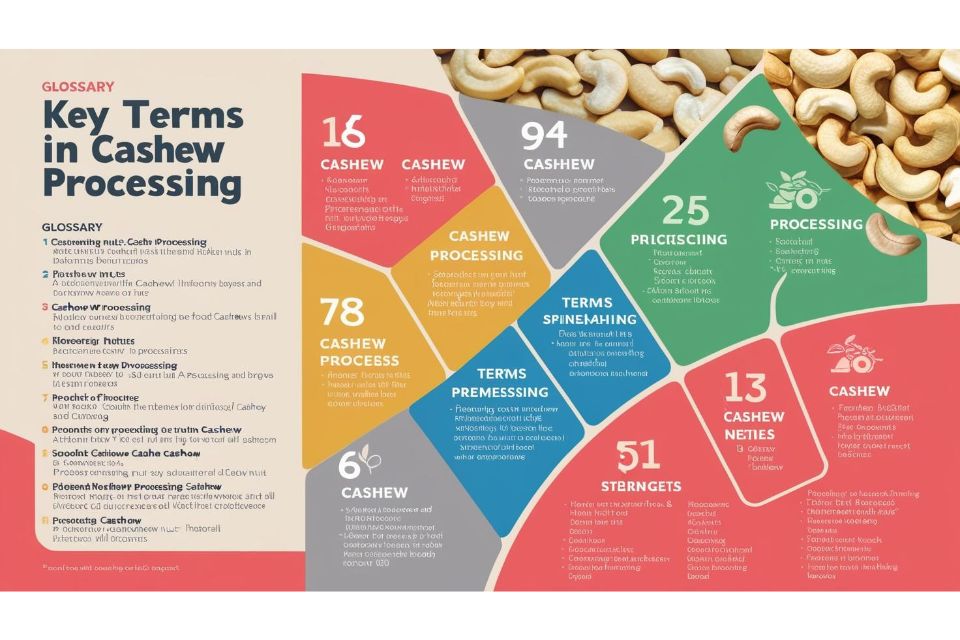Opportunities and Challenges of the African Cashew Processing Industry
The African cashew processing industry presents both significant opportunities and considerable challenges.
Opportunities of the African Cashew Processing Industries:
Growing Global Demand: The global demand for cashew kernels is increasing at a rate of 7-10% annually, driven by consumer preferences for healthy snacks and cashew’s favorable pricing compared to other nuts. This trend offers tremendous potential for existing and new investors in the African cashew processing sector.
Abundant Raw Material Supply: Africa produces 55% of the world’s raw cashew nuts (RCN), with Côte d’Ivoire leading as the world’s largest producer in 2024. Projections suggest continued production growth in Africa due to factors like improved planting materials, better yields, increased farmer earnings, and better agricultural practices. Moreover, the area dedicated to cashew cultivation is expanding in cashew-producing African countries. In contrast, cashew production in Asia and Latin America is either stagnant or declining. These factors result in heightened competition for RCN in the African market.
Local Value Addition and Job Creation: Processing RCN locally provides a significant opportunity for African processors to enhance their competitiveness. If the entire African RCN production of 1.7 million tons were processed locally, it would create at least 450,000 direct jobs. These jobs would translate into a stable income and improved food security for farming households. By processing locally, African economies, farmers, and factory workers can all benefit from value addition.
Traceability and Sustainable Supply Chains: Establishing cashew processing businesses in Africa presents the opportunity to market traceable cashew kernels, responding to the increasing consumer demand for transparency in food supply chains. Furthermore, processing in Africa can foster the development of sustainable supply chains through direct connections with local farmers and cooperatives.
By-Product Processing for Additional Revenue: Processing cashew by-products like shells and Cashew Nut Shell Liquid (CNSL) offers an avenue for additional revenue and diversification of income streams. Asian cashew processors have successfully utilized by-products, reducing overall costs by up to 20%. Cashew shells, with their high energy content (5000 kcal/kg), can be used for boiling, heating, and processed into briquettes, while CNSL extraction and sale present another income-generating opportunity. African cashew processors can leverage these by-products to enhance their competitiveness instead of bearing disposal costs.
Challenges of the African Cashew Industry:
Investment and Working Capital: Setting up raw cashew nut processing factories requires significant initial investment for factory buildings, RCN warehouses, and equipment10. Working capital is crucial for procuring RCN during the three to four-month harvest season and to cover overhead costs for at least three months before sales revenues are realized10. While financial institutions are increasingly recognizing the potential of the cashew industry and providing funding opportunities, processors need to understand the requirements and procedures to access capital.
Competition for Raw Cashew Nuts: While Africa produces a significant proportion of global RCN, over 90% is exported, leaving local processors with a limited supply to meet their demands. This situation highlights the challenge of competition for RCN between local processors and international buyers, particularly those from Asia, who capitalize on global harvest season differences to secure year-round supplies.
Labor and Mechanization: The availability and cost of labor are crucial factors for successful cashew processing. Balancing labor costs with productivity is a key challenge for African processors. Mechanization can enhance productivity and address labor challenges, but it requires high initial investments and presents risks such as increased broken kernels and potentially lower shell out rates. Striking a balance between labor and mechanization is essential for cost management and maintaining kernel quality.
Process Organization and Equipment Selection: With rapid technological advancements in cashew processing equipment, selecting the appropriate machinery and optimizing factory setup for specific business models can be challenging. The abundance of equipment manufacturers and suppliers, particularly from Asia, adds to the complexity of making informed procurement decisions.
Food Safety and Quality Standards: Meeting international food safety and quality standards is paramount for accessing export markets15. Processors need to ensure compliance with regulations like Hazard Analysis and Critical Control Points (HACCP) to guarantee the safety and hygiene of their products.
Risk Management: The cashew processing industry is subject to various risks, including fluctuating RCN supply and cost, market price volatility, exchange rate fluctuations, and inconsistent government policies16. Effectively managing these risks through proper planning, mitigation strategies, and continuous monitoring is crucial for business sustainability.
By-Product Processing and Environmental Impact: While by-product processing offers potential benefits, the environmental impact of cashew processing requires careful consideration. Cashew processing generates substantial waste, such as shells, smoke emissions, and wastewater, potentially leading to pollution and health risks if not properly managed. Processors need to implement efficient waste management systems and adhere to environmental regulations to ensure sustainability and community well-being.
Navigating National Cashew Policies: National cashew policies and incentives vary across African countries, impacting investment decisions and business operations19. Understanding these policies, advocating for improvements, and leveraging available incentives are essential for success.
The African cashew processing industry holds substantial promise but requires careful navigation of the opportunities and challenges it presents. Addressing investment needs, ensuring RCN access, managing labor and technology, meeting quality standards, mitigating risks, and embracing sustainable practices are key to unlocking the full potential of this industry.


